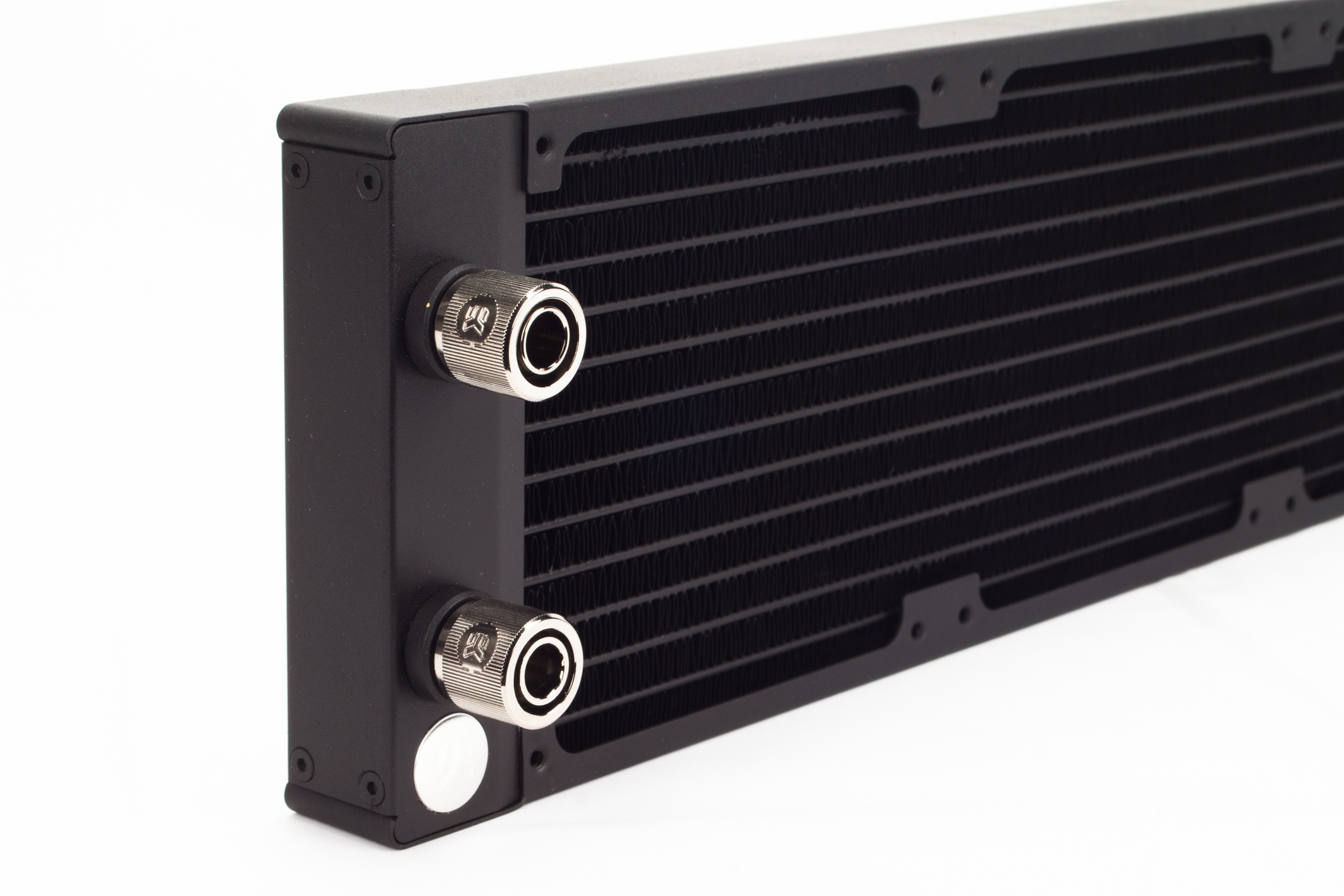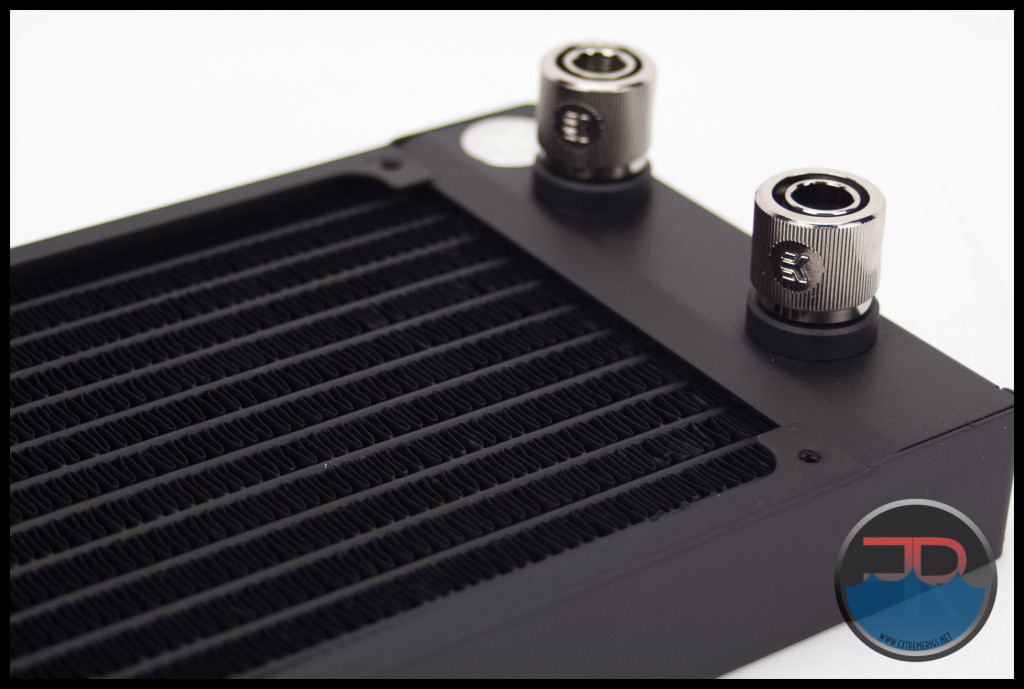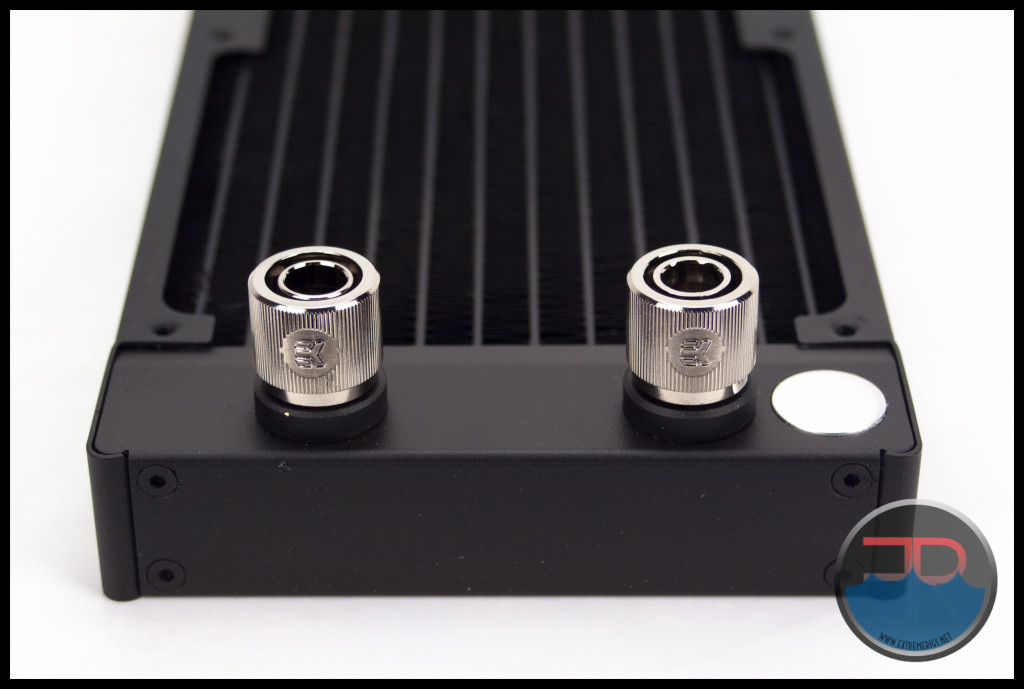Thermal Performance
Thermal Performance scores are derived from the relevant Performance Factor scores. We set this scale with 72.5% and below as the 0 mark, with each 2.5% increase from 72.5% in relative performance adding 0.5 to the awarded performance score.
The Bold Scores are based on performance comparisons of only the slim 360mm Rads. On the second line is the score which is generated against all the 360mm rads from the complete round up.
Push Only Thermal Performance
- 1.5/5 – Slims Only 360mm rads.
- 0/5 – all 360mm rads
The SE 360’s Push Only thermal performance was weak. There were no highlights at any fan speed and its 80.0 comparative performance factor score equated to a Push only score of 1.0
Push/Pull Thermal Performance
- 1.0/5 – Slims Only 360mm rads.
- 0/5 – all 360mm rads
Another category, and another last place for the SE with a Performance Factor Score of 78.8, the SE gets a 1.0/5 for Push Pull Performance.
Overall Thermal Performance
- 1.5/5 – Slims Only 360mm rads.
- 0/5 – all 360mm rads
With the Push Only and Push/Pull results it would be quite amazing if the SE placed anywhere other than last in overall results. It’s poor results all round place it well behind of its nearest competitor and it’s 81.9 Master Performance Factor score means that 1.5/5 score is the end result.
Features & Quality – 3/5
The CoolStream SE 360mm from EK has a great satin black finish and overall the build quality is very good. My only criticism is that the side material of the casing is a bit thin for the length and as such leaves it feeling a bit flimsy when handling the rad.
At 27mm thick (excluding the ports) it is a super slim rad and this is the key feature of the SE. It will fit into spaces where many other rads can only dream of going and because of this, the SE will attract users because of its size.
In saying this I wonder how long until we see a super slim rad such as the SE which is designed for Push Only fan assemblies. This would allow maximum performance for the size of the rad by having a thicker core and not needing to make allowances for another set of fans. Remember where you read it first…
The SE like its stable mate the PE has only 2 ports which is kind of uninspiring as we love multi-port rads because they offer more flexibility and options when installing into the case/loop.
Tube protection plates are not fitted under the fan mounting holes, but the tubes are not directly under the holes so no problems will arise when using the supplied hardware.
The core of the SE prefers a medium speed fan, but there was little change between low and high speed, so all fan speeds can be used effectively – or at least equally poorly.
With a high FPI count the SE will need some cleaning time allocated every now and then to keep it at “peak” performance.
The SE’s medium restriction level will not cause any additional concern when planning the required pump set-up for your loop.
Summary – 2.0/5
The EK CoolStream SE 360mm is a super slim rad, which by default means it will never have outstanding thermal performance. When we break down the results and look at the thermal performance of only the slim rads, the SE is well short of the what the competition is doing.
The boxy design of the CoolStream “E” series should blend seamlessly into any build without drawing attention to itself. Being Super slim it will fit virtually anywhere that has 3 120mm fans spaces side by side. However there may be occasions where the boxy design with the long end tanks may cause issues.
The build quality is very good but we are missing many of the features we now expect to be on radiators.
At the end of the day there are obviously better performing options than the SE, however for those building who like uniform branding in their builds (as many do) and/or are severely cramped for space, the SE 360 may be the radiator you’ve been hoping for.
The SE 360 is due to hit shelves in the second week of July and is expected to have a RRP of $66. Once released we’ll update the pricing and provide the EK Web shop Link…
Where to buy: EK e-shop $66.00 + shipping from Europe















[…] EK CoolStream SE 360mm Radiator Review […]
Thank you for doing this terrific review. It is very useful in the context of the earlier radiator round up you did. Really appreciate the methodology. I am currently choosing slim radiators for a new build; although the Hardware Labs Nemesis GTS series are almost impossible to find in Europe, I think that I will pay up for shipping and customs charges to get a pair sent to me in the UK.
(I’ve tried Hardware Labs importers / retailers in the UK, France, Germany, Italy and the Netherlands: all have terrible stock levels, usually only stocking a few old / superseded models and nowhere like the full range. When I have contacted the UK and Dutch importers to special order two Nemesis GTS they either tried to sell me different radiators that I did not want but which they had in stock, or replied saying we can’t order anything from Hardware Labs for you, or didn’t even bother to reply).
Another great review FF, thanks.
Some surprising results for the SE! Man, I yell ya, I am giving up trying to make predictions. I was concerned that the move to 1.5mms tubes would mean high restriction but it’s really quite reasonable. Quite disappointing thermal results that is hard to understand considering how well it’s thicker brother did.
I guess it just shows how valuable your work is because we just can’t make any assumptions.
Hey Jak,
Yeah this one was pretty low across the board.
I Just finished another 360mm slim rad, it was weaker than the SE with low speed fans, especially in Push Only, but turned out to dominate in the high speed fans because it has a very high FPI count.
I used to try and make predictions, but but doing so can be dangerous, as the predictions can slip easily into assumptions, which in turn tend to make you look for patterns in the data which may or may not end up being there. At this stage you’re questioning the validity of the results, and do a retest, only to get the same results.
Better for sanity’s sake to accurately set the test parameters, and then trust the data that is logged.
Comments are closed.